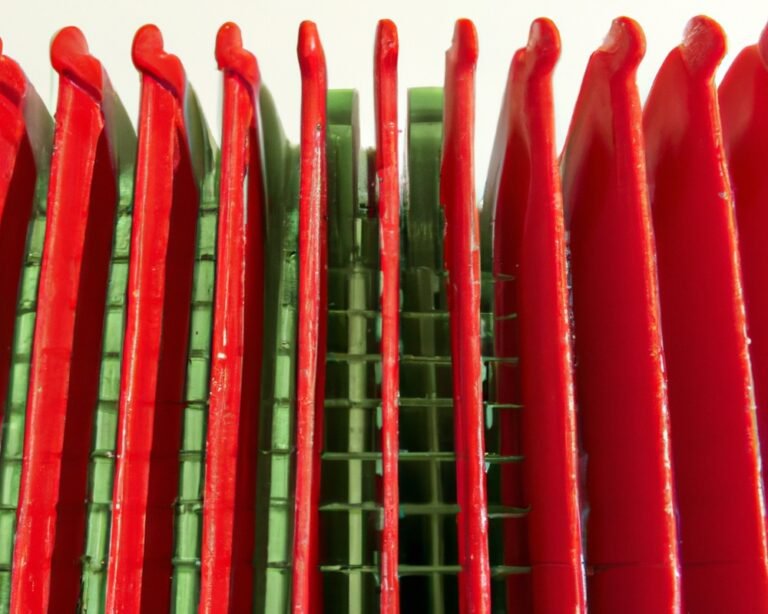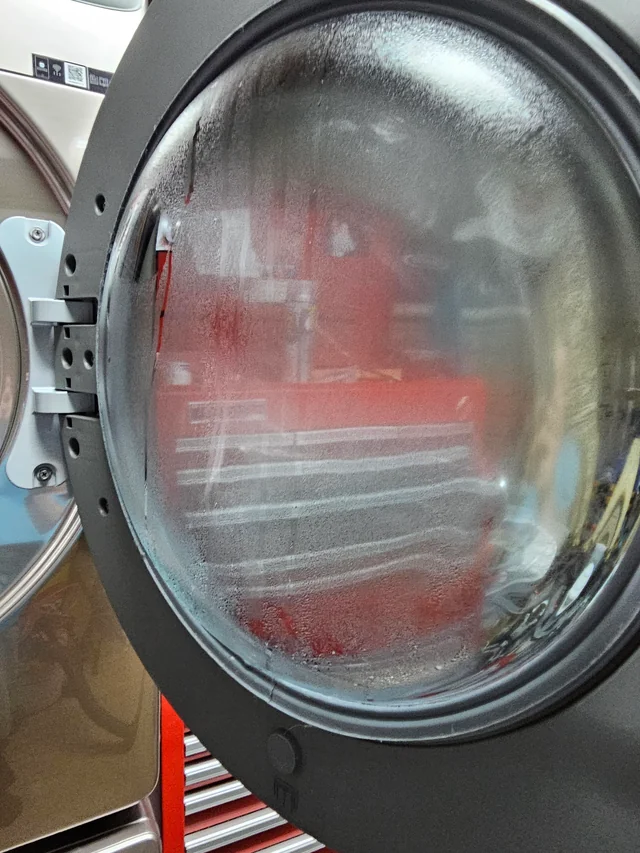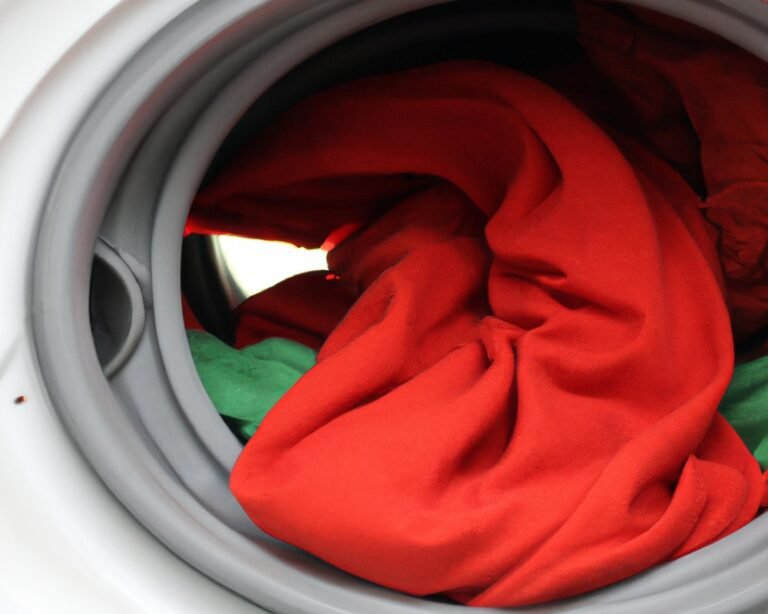Natural Air Drying: Efficient and Sustainable
Key Takeaways:
- Natural air drying is an effective method for preserving and drying various types of food.
- This method helps retain the natural flavors, nutrients, and textures of the food.
- Natural air drying requires proper airflow, low humidity, and the right temperature to ensure successful drying.
- It is a cost-effective and sustainable alternative to other drying methods like using electric dehydrators.
Hey there foodies! Have you ever wondered how you can preserve your favorite ingredients without losing their nutritional value or breaking the bank? Well, look no further because I’ve got the ultimate solution for you: natural air drying! In this article, I’m going to walk you through the incredible benefits of this method, from preserving vital nutrients to reducing your carbon footprint.
We’ll also explore how to properly air dry your favorite foods and discuss the advantages of air drying compared to other methods.
So get ready to dive into the world of natural air drying and discover how it can revolutionize your culinary adventures!
| Pros | Cons |
|---|---|
| Preserves natural texture and color of clothes | Takes longer time compared to machine drying |
| Gentle on delicate fabrics | Weather-dependent; not suitable for rainy or humid days |
| Reduces electricity consumption | May lead to wrinkling of some materials |
| Avoids shrinkage and damage caused by heat in the dryer | Requires ample space for drying racks or clotheslines |
Benefits of Natural Air Drying
Preserves Nutritional Value, Saves Energy and Reduces Carbon Footprint, Cost-Effective Solution, Enhances Flavor and Aroma.
Preserves Nutritional Value
Preserving the nutritional value of food is essential for maintaining a healthy diet.
Natural air drying is a great way to achieve this.
When you air dry fruits, vegetables, or herbs, you remove the moisture without applying heat, which helps retain their nutrients.
This method also eliminates the need for added preservatives or chemicals.
By air drying your food, you can enjoy the full nutritional benefits of fresh produce all year round.

Saves Energy and Reduces Carbon Footprint
Saves Energy and Reduces Carbon Footprint Air drying your clothes naturally not only saves energy but also helps reduce your carbon footprint. Instead of using a dryer, simply hang your clothes outside or indoors on a drying rack.
By doing so, you eliminate the energy consumption associated with running the dryer, which can account for a significant portion of your household’s energy usage.
Natural air drying also avoids the carbon emissions associated with electricity generation, further reducing your impact on the environment. Plus, skipping the dryer can help extend the lifespan of your clothes, reducing the need for replacements and ultimately lowering your overall carbon footprint.

Cost-Effective Solution
A cost-effective solution is always a great option when it comes to solving a problem. In the case of natural air drying, it is no different.
Let me tell you why.
- Energy Savings: Natural air drying requires no electricity, which means you can save on your energy bills. By simply harnessing the power of the wind and sun, you can dry your clothes or other items without using any electrical appliances.
- Reduced Maintenance Costs: Traditional dryers may require frequent maintenance and repairs, adding to your expenses. With natural air drying, there are no complex machines or moving parts to worry about.
- Longer Lifespan: Dryers can have a limited lifespan, typically around 10-15 years. Natural air drying, on the other hand, has no such limitations. By avoiding the wear and tear associated with mechanical dryers, your clothes and other items can last longer.
- Eco-Friendly: By using natural air drying, you reduce your carbon footprint by not relying on electricity. It’s a small step you can take towards a greener lifestyle.
So, if you’re looking for a cost-effective solution that saves you money, reduces maintenance costs, prolongs the lifespan of your items, and helps the environment, natural air drying is the way to go!

Enhances Flavor and Aroma
Enhancing the flavor and aroma is one of the key benefits of natural air drying.
When fruits, vegetables, or herbs are left to air dry, their natural flavors and aromas become more concentrated and pronounced.
This is because the slow drying process allows the natural sugars and essential oils to develop fully, resulting in richer, more intense flavors and fragrances.
Additionally, air drying preserves the natural characteristics of the food, unlike other drying methods that may alter its taste and scent.
So if you want to savor the true essence of your ingredients, give natural air drying a try!
How to Properly Air Dry Food
Air drying food properly involves choosing the right foods, preparing them, creating optimal drying conditions, and storing them correctly.
Choose the Right Foods for Air Drying
To ensure successful air drying, it is important to choose the right foods.
Here are some food types that are commonly air dried:
- Fruits: Apples, bananas, berries, and citrus fruits work well due to their high sugar and acid content.
- Vegetables: Tomatoes, peppers, onions, and herbs are great options. Slice them thinly for faster drying.
- Meat: Lean cuts like jerky, beef, pork, and fish are suitable for air drying, as long as they are properly cured.
- Herbs and Spices: Herbs like rosemary, thyme, and oregano, as well as spices like chili peppers, can be air dried easily.
Remember to choose fresh and high-quality ingredients for the best results.
Preparing the Food for Drying
Preparing the food for drying is an essential step in the air drying process. To begin, ensure that the food is properly washed and any blemishes or bruises have been removed.
Next, slice the food into thin, uniform pieces to promote even drying.
If necessary, blanch the food briefly to preserve its color and texture. Lastly, arrange the food on drying trays, making sure to leave enough space for proper airflow.
With these steps, you’ll be ready to start air drying your food!
Optimal Drying Conditions
Optimal drying conditions are essential to ensure successful air drying of food. Here are some key factors to consider:
- Temperature: The ideal temperature for air drying is around 85°F (30°C. Higher temperatures can cause the food to cook instead of drying, while lower temperatures can lead to longer drying times and potential spoilage.
- Humidity: Low humidity levels are crucial for effective air drying. Aim for a humidity below 60% to prevent the growth of mold and bacteria on the food.
- Air circulation: Good air circulation is essential to remove moisture from the food. Use a fan or ensure that there is adequate airflow around the drying area.
- Ventilation: Proper ventilation helps to remove the moisture evaporated from the food. Ensure that the drying area is well-ventilated to prevent condensation and ensure even drying.
- Protection from pests: To prevent contamination, protect the food from insects, rodents, and other pests that may be attracted to the drying area. Use screens or cover the food with mesh to keep pests away.
Remember, by providing the optimal drying conditions, you can achieve safe and flavorful air-dried food!
Storing Air-Dried Food
Storing air-dried food is essential to maintain its quality and prevent spoilage.
Here are some tips:
- Ensure the food is completely dry before storing.
- Use airtight containers or sealable bags to protect against moisture and pests.
- Label containers with the food type and date of drying.
- Store in a cool, dark, and dry place to extend shelf life.
- Check stored food regularly for signs of spoilage and discard if necessary.
Air Drying vs. Other Drying Methods
Air drying offers a more natural and cost-effective approach compared to other drying methods.
Air Drying vs. Sun Drying
Air drying and sun drying are two common methods used to dry various items. Air drying refers to letting an item dry naturally in the open air, while sun drying specifically involves exposing the item to direct sunlight.
Both methods have their advantages and disadvantages.
Here are some key points to consider:
- Air drying is a convenient option as it does not require any additional equipment or energy sources. It allows for gentle drying, which can be beneficial for delicate items such as clothes or herbs.
- Sun drying, on the other hand, harnesses the power of sunlight to speed up the drying process. It can be particularly effective for items that need to be dried quickly, like fruits or vegetables.
- One downside of sun drying is the potential for the item to be damaged by prolonged exposure to direct sunlight. UV rays can fade color or cause material to become brittle, so it’s important to monitor the drying process closely.
- Air drying may take longer than sun drying, especially if the weather conditions are not ideal or if humidity levels are high. However, it can be a more sustainable option as it does not rely on electricity or other energy sources.
- Ultimately, the choice between air drying and sun drying depends on the specific item being dried and the desired outcome. Consider factors such as time constraints, weather conditions, and the sensitivity of the item to make the best choice.
So, when deciding between air drying and sun drying, take into account the nature of the item you wish to dry and the time you have available.
Air Drying vs. Dehydration
Air drying and dehydration are two different methods of preserving food.
Air drying involves exposing the food to air at room temperature, allowing moisture to evaporate slowly.
This method is simple and doesn’t require any special equipment.
On the other hand, dehydration involves using a food dehydrator or an oven to remove the moisture from the food quickly.
Dehydration may be preferable for certain foods that need to be dried rapidly.
Ultimately, the choice between air drying and dehydration depends on the specific food and your preference for speed or simplicity.
Air Drying vs. Oven Drying
Air drying and oven drying are two common methods of drying objects or food. Air drying involves letting items dry naturally, using the surrounding air to evaporate moisture.
This method is ideal for delicate items like herbs, flowers, or certain crafts.
Oven drying, on the other hand, requires placing the items in an oven at a low temperature to expedite the drying process. It is commonly used for food such as fruits, vegetables, or meats.
Both methods have their advantages and considerations, so it’s important to choose the one that best suits your needs.
Popular Foods for Air Drying
Looking to air dry your favorite foods? Let’s explore some popular options: herbs and spices, fruits and vegetables, and meats and fish.
Herbs and Spices
Herbs and spices are essential ingredients for air drying.
They not only add flavor to your food, but they also help preserve it naturally.
Some popular herbs and spices for air drying include:
- Basil: Known for its aroma and versatility, basil adds a fresh and zesty taste to dried dishes. It pairs well with tomatoes, pasta, and Mediterranean flavors.
- Rosemary: With its distinct pine-like fragrance, rosemary is commonly used to season roasted meats and vegetables. It adds a lovely aroma to dried dishes.
- Thyme: This herb boasts a subtle and earthy flavor that complements both savory and sweet dishes. It works well in soups, stews, and roasted vegetables.
- Oregano: Oregano brings a robust and slightly bitter taste to the table. It’s a staple herb in Italian cuisine and is often used in dried form for pizzas, pasta sauces, and marinades.
Remember to choose fresh herbs and spices for air drying.
Simply tie them in bundles and hang them upside down in a dry, well-ventilated area.
Once they are completely dry, you can crush or store them whole in airtight containers for later use.
Fruits and Vegetables
Fruits and vegetables are excellent options for air drying.
They are packed with nutrients and are a convenient way to preserve their flavors and textures.
Some popular fruits for air drying include apples, bananas, and grapes.
For vegetables, options like carrots, tomatoes, and bell peppers work well.
Before air drying, make sure to wash and slice the fruits and vegetables evenly to ensure even drying.
Store them in a cool and dry place for the best results.
Meats and Fish
Meats and fish are excellent choices for air drying.
You can use various cuts of meat like beef, pork, or chicken, as well as different types of fish.
Here are some popular options:
- Beef jerky: Slice lean cuts of beef into thin strips and marinate them in a mixture of spices and soy sauce before air drying.
- Pork belly: Cut the pork belly into thin slices and season them with your favorite spices before air drying.
- Chicken breast: Slice chicken breast into thin strips and marinate them in a mixture of herbs and spices before air drying.
- Salmon: Cut fresh salmon into thin strips, sprinkle them with salt, and let them air dry until they have a chewy texture.
To ensure safety, make sure to thoroughly cook the meat or fish after air drying.
Frequently Asked Questions
Can I air dry herbs without using a dehydrator?
Yes, you can definitely air dry herbs without using a dehydrator. It’s a simple and cost-effective method.
Here’s how you can do it:
How long does it take to air dry food?
Air drying food is a natural preservation method that can extend the shelf life of various fruits, vegetables, and herbs.
The drying time varies depending on the type of food, moisture content, and climate.
For example, it typically takes 1-2 days to air dry herbs, 3-5 days for fruits like apples or cranberries, and up to 2 weeks for vegetables like tomatoes or peppers.
It’s important to ensure proper airflow and choose a dry, well-ventilated location for the drying process.
Tips for Successful Air Drying
Use clean and dry equipment for air drying.
Slice food items uniformly to ensure even drying.
Use Clean and Dry Equipment
Clean and dry equipment is vital when it comes to air drying your items. Here are a few tips to keep in mind:
- Wash your equipment thoroughly before use to remove any dirt or debris that could transfer to your items.
- Make sure your equipment is completely dry before using it for air drying. Moisture can lead to mold or mildew growth.
- Use a clean and dry surface, such as a clothesline or drying rack, to hang or lay out your items. Avoid using dirty or damp surfaces that could contaminate your clothes.
- Regularly clean and maintain your drying equipment to keep it in good condition, ensuring its effectiveness in the future.
Slice Food Items Uniformly
When slicing food items, it’s important to achieve uniformity for even cooking and presentation.
Here are some tips to help you slice food items uniformly:
- Use a sharp knife: A sharp knife will make it easier to slice through the food item, resulting in cleaner, more precise cuts.
- Use a guide: To ensure consistent thickness, use a guide such as a ruler or a cutting board with measurement markings. This will help you maintain uniformity in your slices.
- Practice your technique: Take your time and practice your slicing technique. By using a smooth, fluid motion and applying consistent pressure, you’ll be able to achieve more even slices.
- Consider using a mandoline: If you’re slicing vegetables or fruits, a mandoline can be a handy tool. It allows you to adjust the thickness of the slices and ensures uniformity throughout.
Rotate and Check for Dryness
To ensure successful air drying, it’s important to rotate your items periodically and check for dryness. By rotating your items, you allow for even airflow and prevent certain areas from drying slower than others.
Checking for dryness is crucial to avoid mold or mildew growth.
Simply touch your items to see if they feel dry. If not, continue the drying process until they are fully dry.
Regularly rotating and checking for dryness will help you achieve optimal results when air drying.
Store in Airtight Containers
When it comes to storing your items after air drying, it’s important to use airtight containers.
This ensures that moisture and air don’t get in, helping to preserve the freshness and quality of your items.
Airtight containers come in various sizes, so you can choose the one that fits your needs.
They are also great for organizing and keeping your items protected from pests and dust.
Simply place your items in the containers, seal them tightly, and store them in a cool, dry place.
This will help to extend the shelf life of your air-dried items.
Safety Precautions for Air Drying
When air drying your food, it’s important to prioritize safety.
Here are some key precautions to keep in mind.
Proper Food Handling and Hygiene
Proper food handling and hygiene are essential to ensure the safety of the food we consume. Here are some key points to keep in mind:
- Handwashing: Wash your hands thoroughly with soap and water before and after handling food. This helps prevent the spread of harmful bacteria.
- Cross-contamination: Keep raw meats, poultry, seafood, and eggs separate from ready-to-eat foods to avoid cross-contamination. Use separate cutting boards and utensils for different types of food.
- Storage: Store perishable foods, such as meat and dairy products, in the refrigerator below 40°F (4°C to prevent bacteria growth. Also, ensure proper storage of leftovers to maintain their quality and safety.
- Cooking temperatures: Use a food thermometer to ensure that meat, poultry, fish, and eggs are cooked to the proper temperature to kill any bacteria. Safe internal temperatures vary for different types of food.
- Cleaning: Clean and sanitize all food preparation surfaces, utensils, and equipment regularly to prevent the growth of harmful bacteria.
Monitor for Mold and Spoilage
When drying your items naturally, it’s important to monitor for mold and spoilage. Here are some tips to ensure you catch any signs early:
- Check regularly: Keep an eye on your items as they dry. Look for any discoloration, unusual smells, or visible mold growth.
- Touch test: Touch the items to feel for any dampness or stickiness. This could indicate moisture build-up or spoilage.
- Sniff test: Take a quick smell of the items and ensure they have a fresh, clean scent. Any musty or foul odors can be a sign of mold or spoilage.
- Separate items: If you notice any signs of mold or spoilage on one item, separate it from the rest to prevent spreading.
- Act quickly: If you do find any mold or spoilage, address it promptly. Remove affected items, clean the area thoroughly, and adjust the drying conditions if necessary.
Remember, proper monitoring is vital to ensure your items dry safely and efficiently. By keeping an eye out for mold and spoilage, you can preserve the quality of your belongings and avoid potential health hazards.
Creative Uses for Air-Dried Food
Get inspired with these creative ideas for using air-dried food in your cooking.
Homemade Seasonings and Spice Blends
Homemade seasonings and spice blends are a fantastic way to add flavor and depth to your dishes.
You can customize them to suit your taste preferences and control the ingredients you use.
With just a few simple ingredients like herbs, spices, and salt, you can create unique and flavorful blends.
Some popular options include taco seasoning, Italian seasoning, and curry powder.
Experiment with different combinations and ratios to discover your favorite homemade seasonings.
Store them in airtight containers and use them to enhance the taste of your soups, stews, marinades, and more.
Get creative and elevate your cooking with homemade seasonings and spice blends.
DIY Trail Mix and Snack Packs
DIY Trail Mix and Snack Packs can be a fun and convenient way to enjoy air-dried foods.
Whether you’re hiking, on-the-go, or just need a quick snack, these packs have got you covered.
You can easily create your own trail mix by combining your favorite air-dried fruits, nuts, and seeds.
Don’t forget to add some chocolate chips or pretzels for an extra tasty twist.
For snack packs, try pairing air-dried veggies with hummus or air-dried meat with cheese for a protein-rich snack.
The possibilities are endless, so get creative and enjoy!
Adding Flavor to Soups and Stews
Adding flavor to soups and stews is a great way to enhance the taste of these comforting dishes.
Here are a few simple tips to help you do just that:
- Use aromatic vegetables like onions, garlic, and celery as a base for your soup or stew. Sautéing them before adding other ingredients can deepen their flavors.
- Experiment with herbs and spices. Add a pinch of dried thyme, a bay leaf, or some crushed red pepper flakes to your soup for an extra kick of flavor.
- Consider adding a splash of acid, such as lemon juice or vinegar, towards the end of cooking. This can brighten the flavors and balance out the richness.
- Don’t forget about salt! It’s an essential seasoning that can bring out the natural flavors in your soup or stew. Taste as you go and adjust accordingly.
- For a more complex flavor profile, try adding a splash of wine or a sprinkle of parmesan cheese. These ingredients can add depth and richness to your dish.
- Lastly, consider using homemade stock or broth instead of store-bought. The flavors will be more pronounced and add an extra layer of taste to your soups and stews.
Now you’re armed with some simple but effective ways to add flavor to your soups and stews.
Give them a try and enjoy the delicious results!
Final Verdict
Natural air drying is a fantastic method for preserving food that offers numerous benefits. By air drying, you can retain the nutritional value of your food while also reducing energy consumption and your carbon footprint.
It is a cost-effective solution that enhances the flavor and aroma of your food.
When properly air drying food, it is important to select the right foods, prepare them correctly, and ensure optimal drying conditions. By following these steps and practicing proper food safety, you can enjoy the many advantages of air dried food.
So why not give it a try and discover the delicious and sustainable world of natural air drying?







